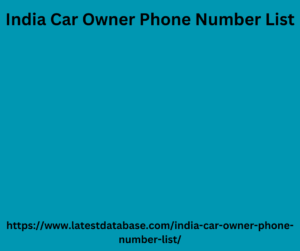Post by account_disabled on Feb 24, 2024 22:32:35 GMT -6
Since it is not possible to attribute the conversion to a specific user, attribution models, event-level reports, aggregation reports or conversion reports per viewing will be evaluated. Individualized traces per user: if these cohorts are not large enough, it may be the case that a single user has an entire cohort associated with them. Google has this in mind to avoid this. Protection against advertising fraud : by limiting the information collected from users, it is possible that traffic from bots can be taken as real. To differentiate real users from bots, trust tokens are already being considered , a technology still in development that could identify the person without revealing their identity.
Anti-fingerprint tracking measures: users must be protected from opaque techniques that acquire user data without their consent, an example may be associating the IP of a mobile phone with a specific user. Along these lines, Google is working India Car Owner Phone Number List on Gnatcatcher , a proposal that allows masking the IP address of a device to protect its identity. in the tests carried out, the learning algorithm has created cohorts with sensitive categories such as race, sexual orientation or personal difficulties. Work is underway to remove those cohorts and reconfigure the algorithm. User confusion: Users may be resistant to this change if they are not correctly informed of how their private data will be treated.

The starting signal for Google FloC With the release of Chrome in April, the first pilot test for Privacy Sandbox will be launched, the idea is that these controls will be expanded and improved in future versions of the browser. Furthermore, although simulations can now be done, it is estimated that cohorts can be tested in Google Ads ads in the second quarter of this year. We will have to wait a little longer to know if FLoC establishes itself as the tool that Google is betting on or if alternatives such as single login are finally implemented. Of course, Google says it will continue working with the WG consortium to develop this and other proposals that make the Internet a safer place for users.
Anti-fingerprint tracking measures: users must be protected from opaque techniques that acquire user data without their consent, an example may be associating the IP of a mobile phone with a specific user. Along these lines, Google is working India Car Owner Phone Number List on Gnatcatcher , a proposal that allows masking the IP address of a device to protect its identity. in the tests carried out, the learning algorithm has created cohorts with sensitive categories such as race, sexual orientation or personal difficulties. Work is underway to remove those cohorts and reconfigure the algorithm. User confusion: Users may be resistant to this change if they are not correctly informed of how their private data will be treated.

The starting signal for Google FloC With the release of Chrome in April, the first pilot test for Privacy Sandbox will be launched, the idea is that these controls will be expanded and improved in future versions of the browser. Furthermore, although simulations can now be done, it is estimated that cohorts can be tested in Google Ads ads in the second quarter of this year. We will have to wait a little longer to know if FLoC establishes itself as the tool that Google is betting on or if alternatives such as single login are finally implemented. Of course, Google says it will continue working with the WG consortium to develop this and other proposals that make the Internet a safer place for users.
